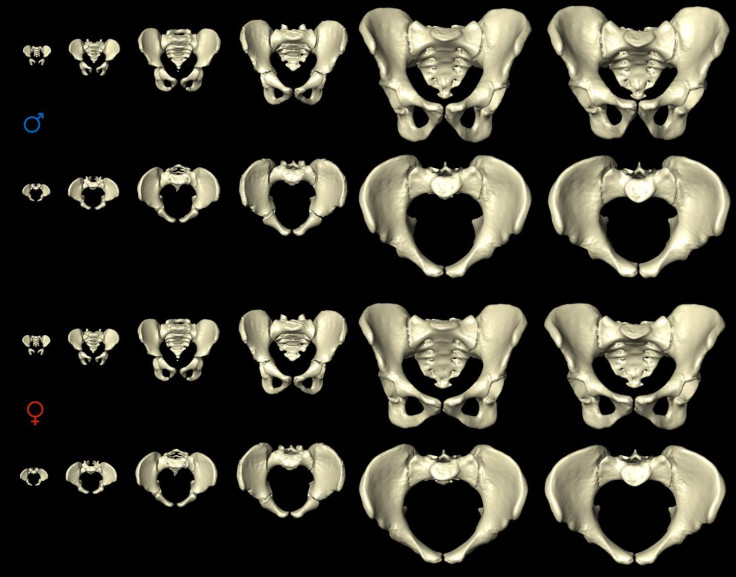Can A Woman's Pelvis Size Be Altered 'On Demand?' Hormonal, Environmental Factors Influence Childbearing Hips

Childbirth has never been easy — throughout history, the smooth birth of a healthy baby has been at odds with dangerous complications affecting either the mother or the child. Medical advancements have significantly improved these odds in favor of a happy outcome, but the way a woman’s pelvis has formed is still an important contributing factor to how a birth will go. Experts have always thought this was up to evolutionary factors, but researchers from the Anthropological Institute of the University of Zurich have suggested that a woman’s pelvic dimensions can shift in response to changes in hormone levels.
From birth until puberty, male and female pelvises are remarkably similar in width. Once puberty begins, however, the male pelvis continues to grow on the same trajectory, while the female pelvis grows in a different direction, widening until it reaches full width at 25 to 30 years old. This obstetrically favorable shape is caused by the high concentration of estrogen that occurs after puberty in females, which also heightens fertility.
“This implies the female body can modulate its pelvic dimensions ‘on demand,’ and is not dependent on genetically fixed developmental programs,” said Maria Ponce de Leon, lead researcher on the study, in a press release. “This suggests difficult childbirths are not necessarily an evolutionary misstep, but more a question of the balance between the hormones and the external factors influencing the size of the birth canal and the prenatal development of the child.”
Beginning at age 40, the female pelvis begins to narrow again, becoming much more similar to the male pelvis. The researchers suggest that a narrow pelvis is better for stabilizing the body and withstanding the high pressures generated in the core while walking. Traditionally, the wider female pelvis has been called a compromise between efficient bipedal motion and successful childbirth, with natural selection favoring larger-hipped females because they’d be able to deliver larger babies. This new research supports the idea that pelvic width depends not only on selection and adaptation, but on the body adapting to environmental and nutritional factors, according to the study.
The authors add that this means the body is capable of adjusting pelvic shape to meet the needs of childbirth.
While pregnant, there are various outside factors a woman becomes especially vulnerable to. Particularly in the developing world, malnutrition, poverty, disease, and lack of access to adequate health care can all complicate childbirth. Since estrogen is the main driver behind pelvic widening, any disruption of the hormone in women of childbearing age could potentially affect their ability to deliver a child. The list of scenarios in which estrogen can be disturbed is nothing to ignore: infections, autoimmune disease, stress, and environmental chemicals all have the potential to alter the course of a woman’s pregnancy.
Source: Huseynov A, Zollikofer C, Coudyzer W, Gascho D, Kellenberger C, Hinzpeter R, et al. Developmental Evidence for Obstetric Adaptation of the Human Female Pelvis. Proceedings of the National Academy of Sciences. 2016.



























